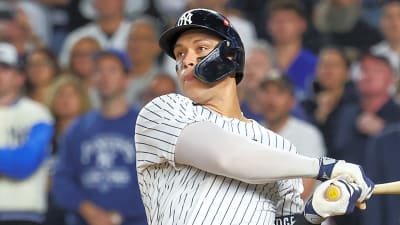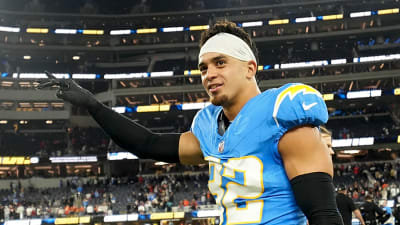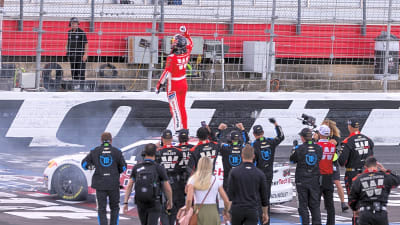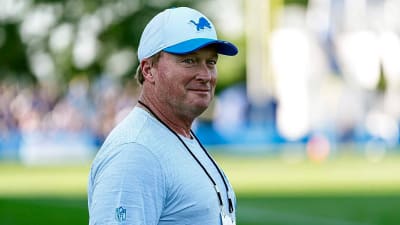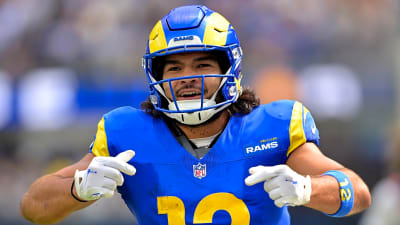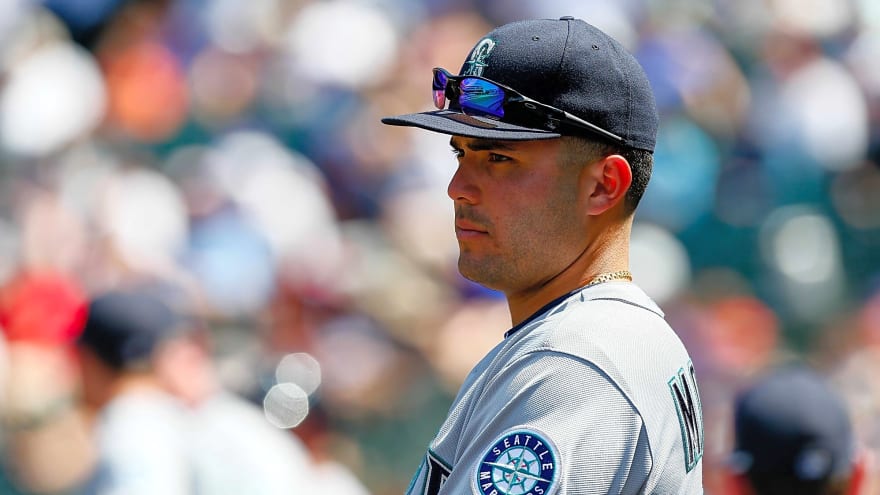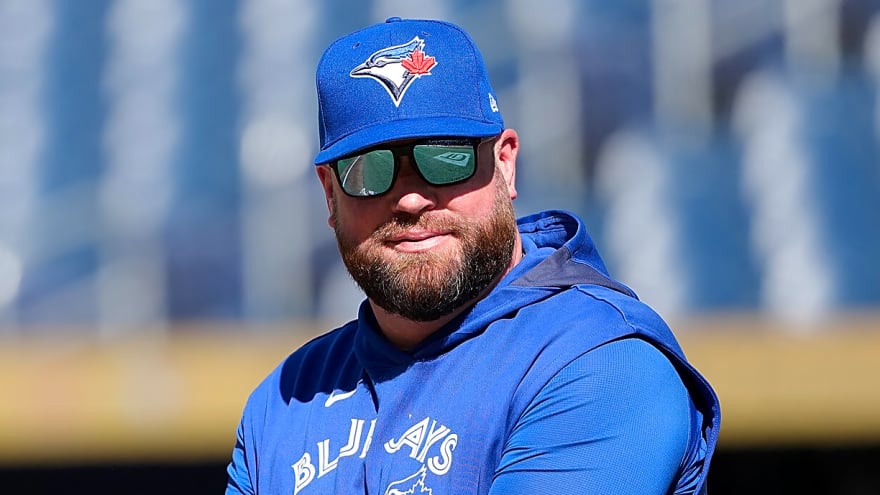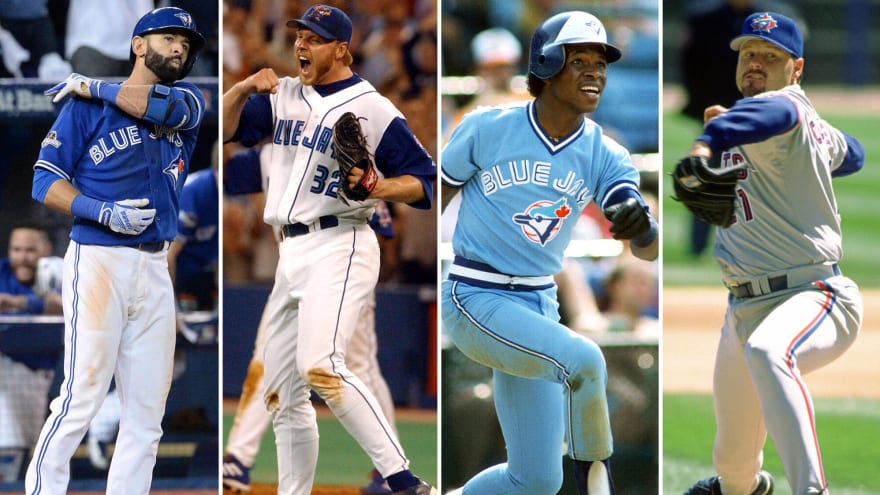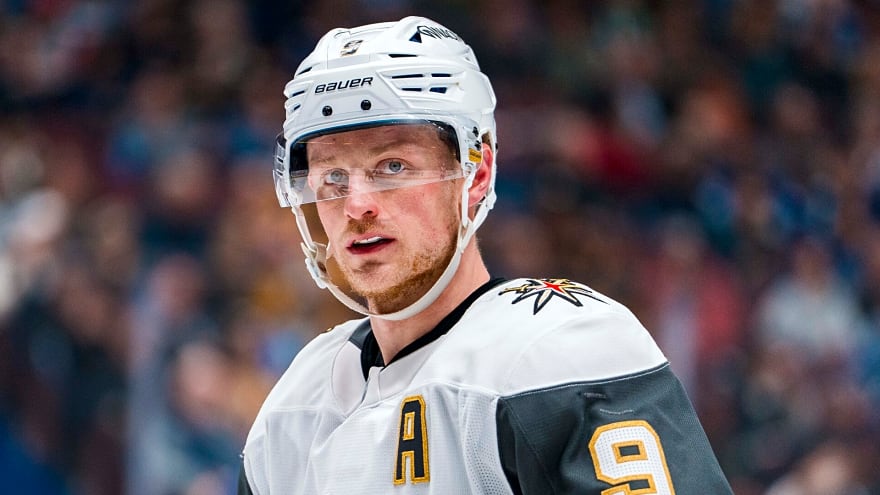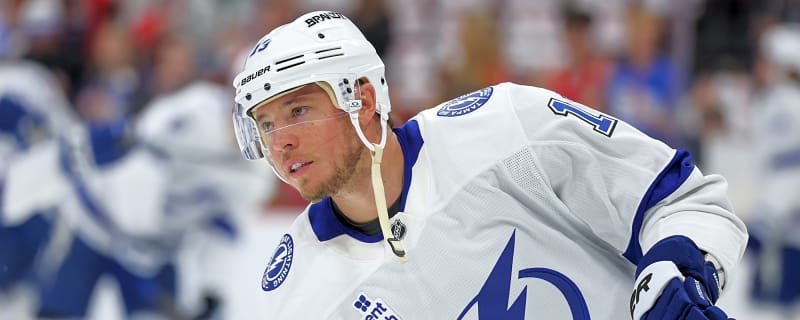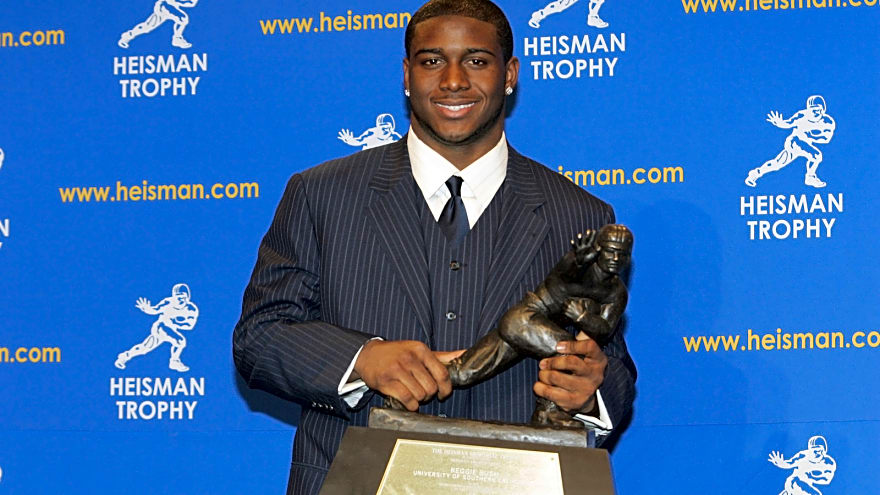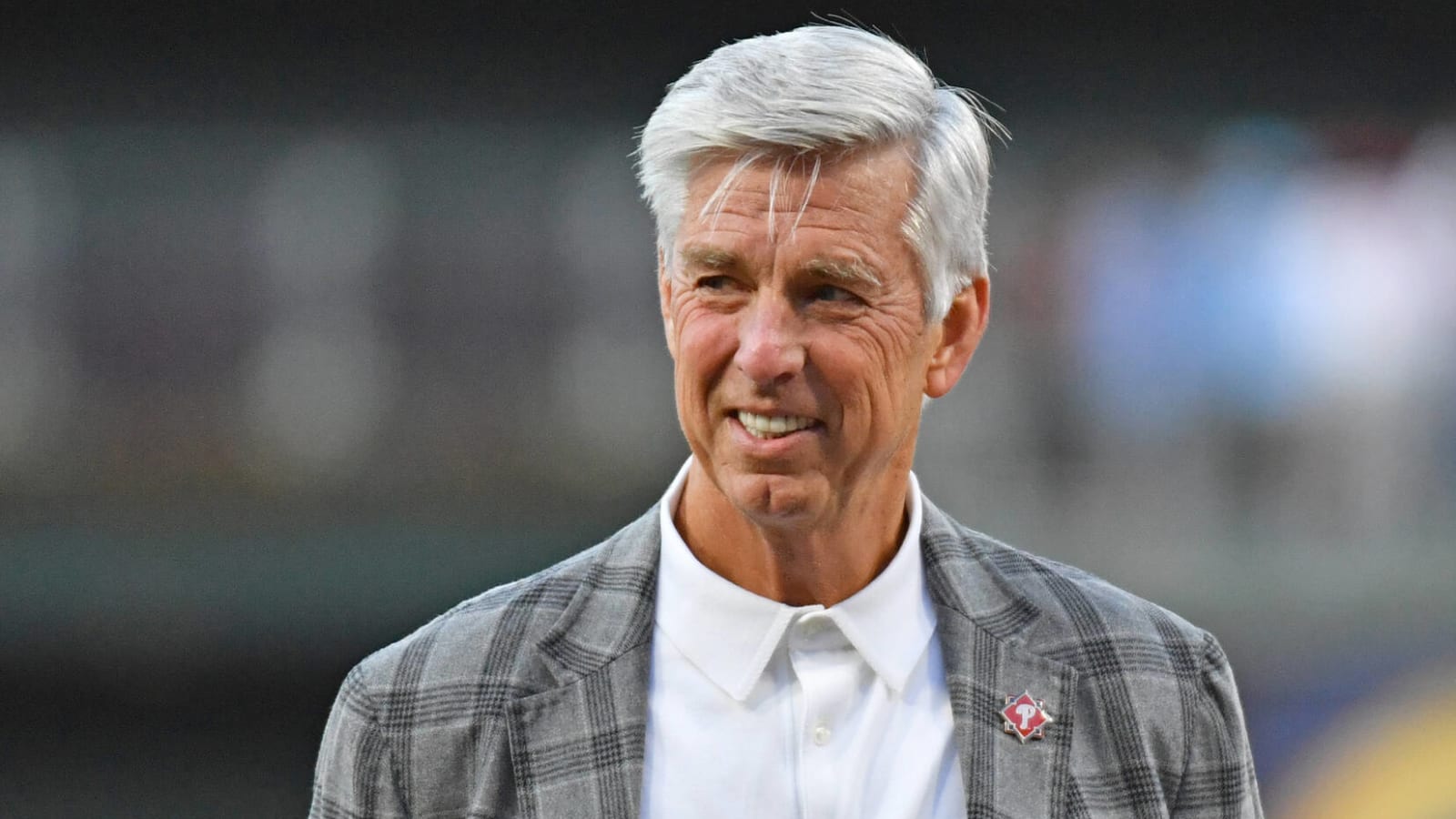
Phillies president of baseball operations Dave Dombrowski joined the 94 WIP Morning show with Joe DeCamara and Jon Ritchie on Wednesday, touching on a broad-reaching number of Phillies topics (Audacy link to the entire 20-minute interview). It’s a good listen for fans of any club – Phils fans in particular, of course – wherein Philadelphia’s top decision-maker discusses his team’s relatively quiet offseason, the state of the rotation and the outfield, Zack Wheeler’s future with the club, top prospect Andrew Painter’s health and quite a bit more.
Among the more notable takeaways was Dombrowski’s reply when asked about a potential late move for one of the remaining big-name starters on the board. Dombrowski didn’t comment on either Blake Snell or Jordan Montgomery by name but expressed that he’s content with the club’s rotation. As far back as early November, Dombrowski touted fifth starter Cristopher Sanchez as someone the team believes can be a big regular in the rotation and his comments Wednesday mesh with that line of thinking. Dombrowski didn’t expressly rule out the addition of another starter but implied that the team wasn’t about to pay market rate for one of the remaining names out there.
“I can’t tell you that somebody doesn’t fall into your lap at some point where you say, ’Gee, that’s an opportunity we can’t turn down,'” Dombrowski said. That suggests a willingness to remain open-minded to some late, unexpected drops in price but doesn’t sound like a portent for an aggressive pursuit of a top-tier free agent.
That said, there was at least one name the Phillies considered worthy of an exception: Yoshinobu Yamamoto. It’s already been reported that the Phillies were a legitimate suitor for the 25-year-old NPB ace before he signed a record deal with the Dodgers and Dombrowski now confirms that his team was “very involved” in Yamamoto’s market. The veteran baseball ops leader went so far as to say that others might be “shocked” to learn how much money the Phillies ultimately offered – naturally, he declined to specify – before indicating that Yamamoto simply had a preference to be a Dodger. The Philadelphia Inquirer’s Scott Lauber reported last week that the Phils also made a 12-year offer, although it’s unclear if they were willing to match the $325M guarantee which Yamamoto received from Los Angeles.
Obviously, any multi-year addition to the rotation could provide the Phillies with some insurance in the event that Wheeler departs as a free agent at season’s end. But Dombrowski called Wheeler “one of the best pitchers in baseball” and stressed that it’s “important” and a “priority” for the Phillies find a way to re-sign the right-hander.
Wheeler, 34 in May, has outperformed the five-year, $118M contract he signed with the Phillies in the 2019-20 offseason. He’s garnered Cy Young consideration in three of his four Phillies seasons, highlighted by a second-place finish in 2021 and a sixth-place finish in 2023.
Over the past four seasons, he’s tied with Corbin Burnes for the fourth-most innings in Major League Baseball and leads MLB in FanGraphs’ wins above replacement. He’s notched a tidy 3.06 ERA despite typically playing in front of one of the game’s weakest defenses, thanks in large part to a sharp 26.7% strikeout rate and excellent 5.3% walk rate. A new contract for Wheeler would begin with his age-35 season, which caps his earning potential to an extent, but recent history has shown teams are willing to pay elite arms even at the late stages of their careers.
A look at MLBTR’s Contract Tracker highlights some recent examples of age-35 (or older) pitchers cashing in. Jacob deGrom signed a five-year deal with a $37M annual value, while Max Scherzer and Justin Verlander both inked multi-year deals at a $43.333M AAV. The AAV on Yu Darvish’s extension, beginning in his age-37 season, is just $18M – but that was a function of the Padres drawing out the term in order to drive down the annual salary for luxury-tax purposes. Darvish still secured a $90M guarantee on that front-loaded deal and was two years older than Wheeler will be in year one of a theoretical free-agent pact or extension. Suffice it to say, Wheeler will be the relatively rare big leaguer who has a chance at multiple nine-figure contracts in his career.
On the point of the team’s defense, Dombrowski cited that as a primary reason the team has not pursued additional outfield help with much aggression this spring. Young Johan Rojas dazzled with his defensive ratings (+15 Defensive Runs Saved, +6 Outs Above Average) in just 392 innings of center field work. Asked if Rojas will be the team’s primary center fielder this season, Dombrowski all but anointed the 23-year-old.
“Likely? Yes,” Dombrowski replied. “Definitively? No. We saw enough the last couple months in August and September that we liked what we saw. I’ve talked to our hitting people at length about his progress over the winter time. He’s worked extremely hard. He’s made adjustments that he needs to make. I’m not saying he’s going to come up and hit .300 with 20 home runs off the bat, but I think he can do enough offensively and contribute from an offensive perspective. And when you add his speed and his defense, all of a sudden he becomes a real plus for us. So yes, I do think he’ll be up, but he has to earn that, too. We’re not just going to give it to him.”
Even as he made those caveats, Dombrowski also spoke of the team’s desire to get Kyle Schwarber more time at designated hitter and to keep Bryce Harper at first base as a means of improving the defense (as opposed to the alternative scenario where Schwarber plays left field and Rhys Hoskins were re-signed to split time between DH and first base). Rojas’ bat looked impressive during his brief regular-season look, as he hit .302/.342/.430 in 164 plate appearances, but that was buoyed by an unsustainable .410 average on balls in play. His bat went ice cold in the playoffs, too, as Rojas fell into a woeful 4-for-43 swoon and struck out in a third of his plate appearances.
Despite the postseason struggles, it appears Rojas will have first crack at the regular center field job. The Phillies are generally thin in terms of outfield depth and Wednesday afternoon’s DFA of Simon Muzziotti could add to that if he’s traded or claimed by another club. There’s perhaps the chance that the Phils could add a bench bat to the mix and outfield would be a natural spot, given the lackluster offensive contributions of Jake Cave and limited track record of Cristian Pache.
Dombrowski acknowledged the possibility of adding a bench bat, simply noting “that might end up happening,” but he didn’t characterize it as a major item that’s yet to be checked off the to-do list. Speaking in general terms, the Phillies president again implied that between wanting to give Rojas a real chance and the veteran nature of much of his roster, free agents have seen greater opportunity for playing time with other clubs thus far. There’s still quite a few names yet unsigned, so it stands to reason that the Phils could eventually find a bargain addition to deepen the mix. Pache, Cave and utility infielder Edmundo Sosa are all out of options, however, so adding a player to the bench mix would likely mean jettisoning someone like Cave, who’s already agreed to a $1M salary for the 2024 season. That isn’t likely to be a major roadblock to any further additions, but it’ll factor into the calculus all the same.
Starting pitching depth, too, has been a recent area the Phillies have been searching. They signed former Braves first-rounder Kolby Allard to a split big league deal last month due in no small part to the fact that he has a minor league option remaining. That same line of thinking surely influenced Wednesday’s claim of righty Max Castillo from the Red Sox.
The Phillies have top prospects Mick Abel and Griff McGarry working through the minor league system, and while both could make their debuts in 2024, neither has yet pitched even five innings above the Double-A level. Painter was a rotation candidate early last season but wound up going down with an elbow injury that ultimately required Tommy John surgery. Dombrowski said in this morning’s interview that Painter has begun “tossing” a ball recently and is on schedule but that the organization is “looking toward 2025” with regard to the prized righty and isn’t planning on him pitching in games this season. There’s always the possibility his recovery progresses more quickly than expected, but the 20-year-old right-hander doesn’t appear to be someone the Phillies are banking on for even a late-season cameo.
More must-reads:
- Phillies president details pursuit of Japanese star pitcher
- Phillies claim RHP Max Castillo off waivers from Red Sox
- The '30 or more home runs in 2021' quiz
Breaking News
Trending News
Customize Your Newsletter
 +
+
Get the latest news and rumors, customized to your favorite sports and teams. Emailed daily. Always free!
TODAY'S BEST

Cubs Manager Craig Counsell Threw Player Under the Bus
Chicago Cubs manager Craig Counsell looked stressed in his postgame press conference on Monday night. The Cubs are in danger of losing the NLDS after dropping Game 2 following a 7-3 loss to the Milwaukee Brewers in front of 42,787 fans at American Family Field. Starting pitcher Shota Imanaga was rocked by the Brewers, giving up four earned runs, three of which came off a home run by former Chicago White Sox first baseman Andrew Vaughn. The Brewers earned their first lead of the game when Imanaga gave up a one-run homer in the third inning to catcher William Contreras. Chicago Cubs manager Craig Counsell on the loss During his postgame news conference, Counsell told the media he voiced his frustration with the pitching staff giving up multiple home runs. A three-run home run by Jackson Chourio off of relief pitcher Daniel Palencia in the fourth inning added insurance for the Brewers. “I mean, look, we made a couple of mistakes with multiple runners on base and, after, after getting off to a great start,” Counsell said of blowing a 3-0 lead in the first inning, via Marquee Sports Network. “Those mistakes were two, three on homers… You’re not going to win playoff games giving up to three homers. That was just too much to overcome.” Counsell didn’t like how Imanaga pitched on Monday Counsell was frustrated that Imanaga allowed multiple players on base before giving up home runs. “I think giving up home runs, and Shota has succeeded because he’s kept runners off base, and maybe the solo home run doesn’t hurt you as much,” Counsell said.” Again, I’m going to reiterate, the three-run homer is going to kill you, and you can survive some solo home runs, homers with men on base like that, you’re going to have a tough time surviving them. “And you know, he did get off to a good start. There was some swing and miss first two innings, for sure. That was, was good to see. But you know, the long ball… With runners on base, like, that’s going to be hard to overcome.” Imanaga wasn’t happy with himself after the loss, claiming he “ruined” the Cubs chances of tying up the series. “I ruined the game,” Imanaga said. “So there’s a lot of frustration within myself.” The Cubs now trail the Brewers 0-2. They will play in an elimination game on Wednesday at 4:08 p.m. CDT on TBS.

Dolphins’ Mike McDaniel Issues Serious Warning to Tua Tagovailoa
Mike McDaniel’s Dolphins are stuck in a rut, and the pressure is mounting fast. After messing up a 17-0 lead last Sunday, the team sits at 1-4, its worst start since 2021. The defense looks shaky, and Tua Tagovailoa’s performance has become an overanalyzed topic in Miami. The team’s future and McDaniel’s job security now hang in the balance as the clock ticks toward their Week 6 showdown with the Los Angeles Chargers. And the head coach didn’t sugarcoat things during his media session ahead of the game. When asked how quarterback Tua has absorbed the high expectations amidst growing frustration, McDaniel was blunt. “A bottom line, black and white, you’re held accountable for the results while you’re trying to get better, that’s difficult.” He knows Tua faces constant noise, from praise to criticism, and how a player handles that separates the winners from the rest. “It’s not easy, but that’s something that no quarterback in the National Football League is not exposed to…They tell you you’re awesome or that you suck. What is that? How does that relate to what you’re doing to influence your next performance?” That’s as close to a warning from a head coach as you get without flat out saying ‘shape up or ship out.’ McDaniel is emphasizing accountability to a player who’s been under the microscope since Day 1. Tagovailoa, who threw three touchdowns on Sunday but watched his team collapse after a strong start, knows the sting of losing better than most. “No one wants to start the season 1-4…We’ve got to figure this out now. This feeling sucks,” Tua admitted. The Dolphins’ offense sputtered after their early lead, rushing for a mere 19 yards, their lowest since McDaniel took over in 2022. The defense gave up 239 rushing yards, with rookie Rico Dowdle running for a career high of 206 yards. This loss was a wake-up call. Miami’s meltdown was the first time under McDaniel that the Dolphins lost after holding a 17-point lead. And with a turnover differential advantage, no less. McDaniel called the loss “unacceptable,” taking full responsibility and promising immediate fixes. Despite that, the head coach’s job security remains in question. Mike McDaniel is on the hot seat The pressure on McDaniel isn’t just coming from the scoreboard. ESPN’s Jeremy Fowler put it plainly on The Rich Eisen Show: “(McDaniel’s seat) is moderately hot.” Ownership likes the guy, but patience is wearing thin. “This is not something where they are looking for an excuse to move on from him right now,” Fowler said. “They want to give him a little bit of time…[But] if they have some home games that are pretty ugly, if the fans turn on the team. That’s when Stephen Ross could make a move.” That’s a polite way of saying the Dolphins’ season is hanging by a thread. The team’s defense, retooled and weaker than before, hasn’t gelled. Key players on that side were let go for locker room culture reasons, but their replacements haven’t measured up. It’s a rebuilding year with a thin margin for error. Fowler points out Miami’s transition, saying “they’re not working with a team that is ready-made to win right now, at least on that side of the ball.” With just two home games in October and intense fan scrutiny looming, McDaniel’s future depends heavily on fixing what’s broken now. The Dolphins will have to find their identity fast. And McDaniel will need to prove he’s the right man to lead them through these rough waters.

Cowboys coach makes it sound like personnel change some were expecting won't happen ahead of Week 6

Bengals' Zac Taylor explains shocking Joe Flacco move for Packers game
Roughly 24 hours after outsiders learned that the Cincinnati Bengals were acquiring veteran quarterback Joe Flacco from the Cleveland Browns, Bengals head coach Zac Taylor confirmed that Flacco will start over Jake Browning when 2-3 Cincinnati plays at the Green Bay Packers (2-1-1) this coming Sunday. While speaking with media members, Taylor explained that somewhat surprising decision. Why Zac Taylor believes he can get Joe Flacco "up to speed quickly" "He's already spent a lot of time meeting with us, getting up to speed, so I feel really good about where he's at," Taylor said about Flacco, per Dave Clark of the Cincinnati Enquirer. "You just know him. ...Very comfortable with his style, concepts he's good at, things that we do. All of the terminology, there's a carryover, more so than I would have anticipated. So I feel like we can get him up to speed quickly." Flacco lost three of four September starts with the Browns before the Super Bowl XLVII Most Valuable Player was benched in favor of rookie Dillon Gabriel. According to Pro Football Reference stats, Flacco began Wednesday ranked last in the NFL among qualified players with a 60.3 passer rating for the ongoing season. Additionally, he's 28th out of 32 signal-callers with a 36.7 adjusted QBR. That said, Flacco is a 40-year-old who has seen every defensive concept an opposing coordinator could and will throw his way. Back on Sept. 21, he helped the Browns earn a 13-10 win over the Packers in downtown Cleveland. Zac Taylor likes that Joe Flacco faced this Packers defense in September "It's different than a young quarterback coming in, trying to learn the system and understand what a defense is trying to do to try to challenge you," Taylor added about his decision to start Flacco versus the Packers. "Not only that, but he's played Green Bay this year, so he's already gone through a week of prep. ...Now the communication and the weekly rhythm is maybe different and unique, but he's already prepared for this opponent. So he gets a chance to refresh himself on that, while at the same time just learning our system and our terminology...and how we operate." Shortly after Taylor made his comments, ESPN BET had the Bengals listed as massive 14.5-point underdogs against Green Bay. Perhaps that line and the fact that he was discarded by Cleveland will give Flacco some extra motivation heading into the showdown that will take place at Lambeau Field.

Why HC Andy Reid is to blame for Chiefs' collapse vs. Jaguars
The Kansas City Chiefs seemed to be in total control on "Monday Night Football." They jumped to an early 14-0 lead over the Jacksonville Jaguars and were dominating on both sides of the ball before it all went downhill. Chiefs quarterback Patrick Mahomes was 29-of-41 with a touchdown and an interception, while Jaguars signal-caller Trevor Lawrence was 18-of-25, also with a TD and an interception. Despite similar stat lines, it was Lawrence who rallied his squad to a 31-28 win. The difference? The Chiefs drew a whopping 13 penalties, making it incredibly difficult for them to pull out a win as they constantly went backwards and gave up yards. That said, Kansas City head coach Andy Reid didn't seem to agree with some of the calls: "We had 13 penalties, to their 4," Reid said, per Harold R. Kuntz. "Whether I agree with them or don't agree w/ them, it doesn't matter. They called them. So, you have that many penalties, you give up field position, you can out stat them to death, but that doesn't matter. It's the score that matters." Andy Reid must be held accountable Reid is entitled to his opinion, but Monday night's game wasn't an outlier. The Chiefs have become one of the most undisciplined teams in the league, and that ultimately falls on the coach. Reid has also stuck with Jawaan Taylor at right tackle, even though he's leading the league in penalties for yet another season. As pointed out by Josh Dubow of Associated Press, the Chiefs are currently tied sixth for the most enforced penalties per game (8.4), fifth in enforced penalty yards per game (70), tied for the second-worst penalty differential (-13) and the third-worst team in penalty yard differential (-90). It's too early to sound the alarms, but undisciplined teams rarely go the distance. Reid is one of the greatest NFL head coaches of all time, but he needs to be held accountable and, more importantly, get to work to fix these issues.

